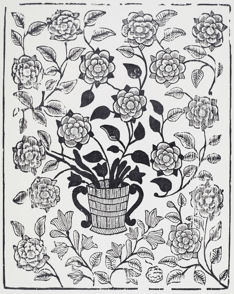
It will document and make available knowledge on Polish folk woodcutting. For professionals it will be a place for the exchange of information and experience, while for other users it will create an environment geared towards education and fun, as well as room for creative inventiveness. We are certain that folk woodcuts are a remarkable, but as yet unknown, cultural testimony which has the power to inspire the minds of contemporary people.
Our project is a response to the need to complement and disseminate a deeper knowledge about dispersed and hitherto little known objects. We hope that thanks to the undertaken research we will find historical artefacts as yet unknown. New tools will allow for easier cooperation between institutions and people who are occupied with the documentation, protection, and the popularisation of cultural heritage. The first virtual portal dedicated to Polish folk woodcutting is equipped with a bilingual interface which will allow for the addition of data on Polish woodcuts to the broader cultural domain.
We invite users to benefit from the DATABASE which allow for the quick access to information on Polish folk woodcuts, kept in collections both public and private. Apart from data concerning specific objects, users will also have rich illustrative material at their fingertips, while an interactive map will allow the user to grasp the scale and reach of the phenomenon.
The Virtual Folk Woodcut Museum creates areas of artistic activity referring back to woodcutting techniques. It will also make available educational materials directed towards various user groups, as well as present virtual exhibitions, which in turn may also be transformed into user-defined galleries. We hope that in the next few years the Virtual Museum will expand its offer, while the database will grow to include collections from Poland as a while as well as other countries where Polish folk woodcuts may be found.
The project is co-financed by the Ministry of Culture and National Heritage as part of the Cultural Heritage programme, Folk Culture priority.

